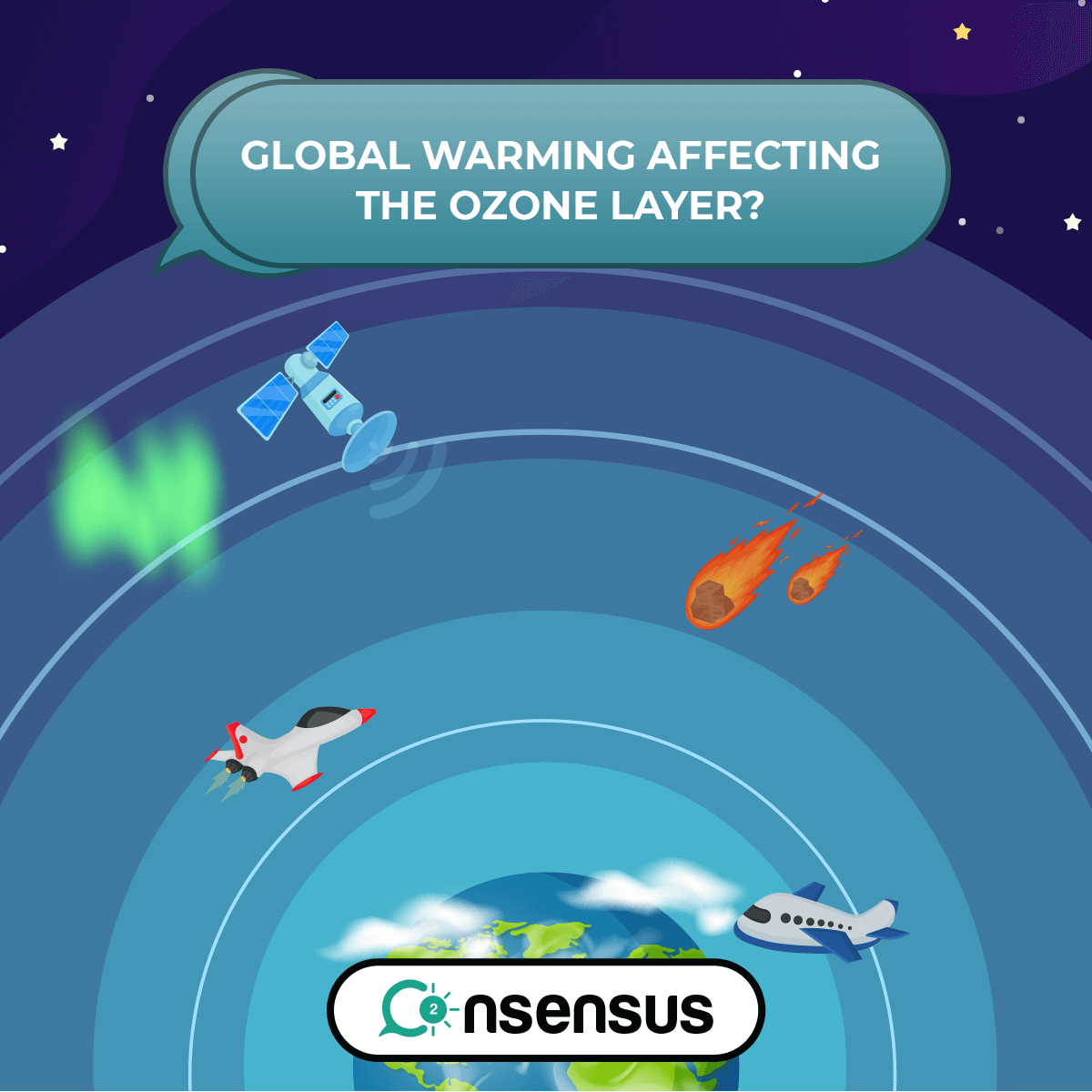Climate change is one of the biggest threat that is being faced by our planet. Global warming affects the ozone layer in such a way that it has resulted in further increase in ozone depletion.
Global warming is caused by the increased production of greenhouse, which tends to absorb the infra-red radiations, thereby causing an increase in Earth’s temperature.
While the general public tends to see global warming as a subset of ozone depletion, in fact ozone and chemicals such as chlorofluorocarbons (CFCs) and other halocarbons, which are held responsible for ozone depletion, are important greenhouse gasses. Furthermore, natural levels of ozone in both the stratosphere and troposphere have a warming effect.
It is a well-known fact that greenhouse gas (GHG) is a gas that absorbs and emits radiant energy within the thermal infrared range. Greenhouse gases cause the greenhouse effect. The primary greenhouse gases in Earth’s atmosphere are water vapour, carbon dioxide, methane, nitrous oxide and ozone. Without greenhouse gases, the average temperature of Earth’s surface would be about −18 °C (0 °F).
Stratospheric ozone is constantly produced by the action of the sun’s ultraviolet radiation on oxygen molecules (known as photochemical reactions). Although ozone is created primarily at tropical latitudes, large-scale air circulation patterns in the lower stratosphere move ozone toward the poles, where its concentration builds up.
Ozone is found in two different parts of our atmosphere. It is found in the troposphere and is responsible for acting as a human irritant and a component of smog. While the ozone in stratosphere makes up the majority of atmospheric ozone and is quite beneficial for us. The stratospheric ozone layer absorbs ultraviolet (UV) radiation, preventing dangerous UV rays from hitting Earth’s surface and harming living organisms.
The ozone hole is basically a man-made hole in the ozone layer above the South Pole during the Southern Hemisphere’s spring. The ozone layer, which lies high up in the atmosphere, shields us from harmful ultraviolet (UV) rays that come from the Sun. Unfortunately we punched a hole in it, through the use of gases like chlorofluorocarbons (CFCs) in spray cans and refrigerants, which break down ozone molecules in the upper atmosphere.
The average concentration of ozone in the atmosphere is about 300 Dobson Units. In any area where the concentration drops below 220 Dobson Units, than that is considered to be part of the ozone hole. While some extra of the Sun’s UV rays slip through the ozone hole, their net effect is to cool the stratosphere more than they warm the troposphere.
Since the 1960s, there has been a trend of increased warming of the lower atmosphere and a cooling of the upper atmosphere. This warming-cooling dynamic creates conditions that lead to ozone loss.
Observations show that as greenhouse gases increase and result in heating in the lower atmosphere (troposphere), a cooling is occurring in the upper atmosphere (stratosphere). Largely because heat from Earth’s surface that normally would convey through the troposphere and stratosphere, and eventually escape to space, is now being trapped (or confined to the troposphere).
The increasing temperatures at the Earth’s surface and decreasing temperatures in higher parts of the atmosphere can be partly explained using the blanket analogy.
Carbon dioxide and other heat-trapping gases rise into the atmosphere and spread around the globe, like a blanket wrapping Earth. This blanket warms the surface of the Earth and protects it from the cold air above it.
The increased concentrations of heat-trapping gases make the blanket uncomfortably thicker. Wrapped now in a thicker blanket, Earth’s surface warms up, heats the blanket itself, and traps more heat in the lower atmosphere. The blanket also prevents heat from moving from the lower atmosphere to the stratosphere, cooling down the stratosphere as a result.
In other words, heat-trapping gases contribute to creating the cooling conditions in the atmosphere that lead to ozone depletion. Greenhouse gases absorb heat at relatively low altitudes and warm the surface–but they have the opposite effect in higher altitudes because they prevent heat from rising.
In a cooler stratosphere, ozone loss creates a cooling effect that results in further ozone depletion. UV radiation releases heat into the stratosphere when it reacts with ozone. With less ozone there is less heat released, amplifying the cooling in the lower stratosphere, and enhancing the formation of ozone-depleting polar stratospheric clouds, especially near the South Pole.
Most important thing is that the gases causing both these problems have long lifetimes after emission to the atmosphere, thus causing problems which are quite difficult to reverse. However, the Vienna Convention for the Protection of the Ozone Layer and the Montreal Protocol that amended it are seen as success stories, while the Kyoto Protocol on climate change has unfortunately failed.
